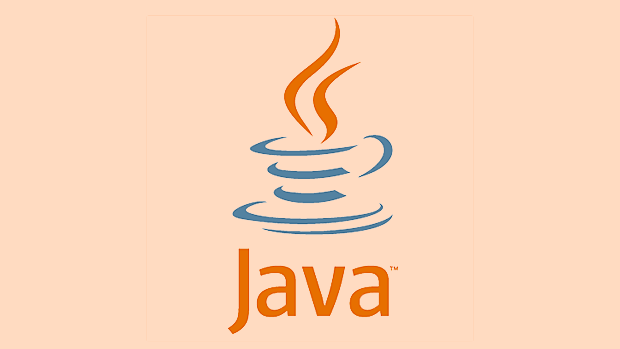To implement LRU caching, the most common method in Java is to use LinkedHashMap or manually combine hash tables with bidirectional linked lists. 1. When using LinkedHashMap, pass true into the constructor to enable access order, and override the removeEldestEntry method to control capacity; 2. Manual implementation requires defining the bidirectional linked list node class to maintain access order, operations include adding, deleting and moving nodes; 3. If thread safety is required, synchronous blocks or concurrent sets can be used, but pay attention to performance impact. These methods can be selected according to needs, taking into account efficiency and control.

To implement an LRU (Least Recently Used) Cache in Java, you'll typically use a combination of data structures to efficiently track and remove the least recently used items when the cache reaches capacity. The most common approach is to use a double linked list along with a hash map .

Java actually provides a built-in class that makes this easier: LinkedHashMap . It maintains insertion or access order, which allows us to easily evict the least recently used entry.
Here's how to do it step by step:

Using LinkedHashMap for LRU Cache
Java's LinkedHashMap can be extended and customized to behave like an LRU cache by overriding the removeEldestEntry() method. This method controls whether the elderly entry should be removed when a new entry is added.
import java.util.LinkedHashMap;
import java.util.Map;
public class LRUCache extends LinkedHashMap<Integer, Integer> {
private int capacity;
public LRUCache(int capacity) {
// Load factor 0.75f ??is standard; accessOrder true means we want access-order instead of insertion-order
super(capacity, 0.75f, true);
this.capacity = capacity;
}
@Override
protected boolean removeEldestEntry(Map.Entry<Integer, Integer> eldest) {
return size() > capacity;
}
} This is a simple and effective way to build an LRU Cache if thread safety isn't required. Just make sure the constructor passes true as the third argument to enable access order.

Implementing from Scratch with HashMap Double Linked List
If you're implementing it without relying on LinkedHashMap , you'll need:
- A double linked list to keep track of the access order.
- A hash map to store key-node mappings for O(1) access.
Here's a high-level breakdown:
- Each node holds a key-value pair and references to previous and next nodes.
- When a key is accessed (get or put), move its node to the front (most recently used).
- When the cache is full, remove the last node ( least recently used).
You'd define a Node class and manage operations like:
- Adding a node to the front.
- Removing a specific node.
- Moving a node to the front.
This version gives more control but requires careful handling of points and edge cases like removing the head or tail.
Handling Thread Safety
The above implementations are not thread-safe. If your application uses multiple threads, you have two options:
- Wrap access to the cache with
synchronizedblocks. - Use a concurrent data structure or decorate the map with
Collections.synchronizedMap().
For example:
Map<Integer, Integer> synchronizedMap = Collections.synchronizedMap(yourLRUMap);
However, this might affect performance under heavy concurrency. For production systems, consider using libraries or writing fine-grained locking mechanisms.
Implementing an LRU Cache in Java doesn't have to be hard — especially if you take advantage of built-in classes like LinkedHashMap . But understanding the internal mechanics (like double linked lists and hash maps) helps you debug and optimize better when things get more complex.
Basically that's it.
The above is the detailed content of How to implement an LRU Cache in Java?. For more information, please follow other related articles on the PHP Chinese website!

Hot AI Tools

Undress AI Tool
Undress images for free

Undresser.AI Undress
AI-powered app for creating realistic nude photos

AI Clothes Remover
Online AI tool for removing clothes from photos.

Clothoff.io
AI clothes remover

Video Face Swap
Swap faces in any video effortlessly with our completely free AI face swap tool!

Hot Article

Hot Tools

Notepad++7.3.1
Easy-to-use and free code editor

SublimeText3 Chinese version
Chinese version, very easy to use

Zend Studio 13.0.1
Powerful PHP integrated development environment

Dreamweaver CS6
Visual web development tools

SublimeText3 Mac version
God-level code editing software (SublimeText3)

Hot Topics
 Difference between HashMap and Hashtable?
Jun 24, 2025 pm 09:41 PM
Difference between HashMap and Hashtable?
Jun 24, 2025 pm 09:41 PM
The difference between HashMap and Hashtable is mainly reflected in thread safety, null value support and performance. 1. In terms of thread safety, Hashtable is thread-safe, and its methods are mostly synchronous methods, while HashMap does not perform synchronization processing, which is not thread-safe; 2. In terms of null value support, HashMap allows one null key and multiple null values, while Hashtable does not allow null keys or values, otherwise a NullPointerException will be thrown; 3. In terms of performance, HashMap is more efficient because there is no synchronization mechanism, and Hashtable has a low locking performance for each operation. It is recommended to use ConcurrentHashMap instead.
 Why do we need wrapper classes?
Jun 28, 2025 am 01:01 AM
Why do we need wrapper classes?
Jun 28, 2025 am 01:01 AM
Java uses wrapper classes because basic data types cannot directly participate in object-oriented operations, and object forms are often required in actual needs; 1. Collection classes can only store objects, such as Lists use automatic boxing to store numerical values; 2. Generics do not support basic types, and packaging classes must be used as type parameters; 3. Packaging classes can represent null values ??to distinguish unset or missing data; 4. Packaging classes provide practical methods such as string conversion to facilitate data parsing and processing, so in scenarios where these characteristics are needed, packaging classes are indispensable.
 What are static methods in interfaces?
Jun 24, 2025 pm 10:57 PM
What are static methods in interfaces?
Jun 24, 2025 pm 10:57 PM
StaticmethodsininterfaceswereintroducedinJava8toallowutilityfunctionswithintheinterfaceitself.BeforeJava8,suchfunctionsrequiredseparatehelperclasses,leadingtodisorganizedcode.Now,staticmethodsprovidethreekeybenefits:1)theyenableutilitymethodsdirectly
 How does JIT compiler optimize code?
Jun 24, 2025 pm 10:45 PM
How does JIT compiler optimize code?
Jun 24, 2025 pm 10:45 PM
The JIT compiler optimizes code through four methods: method inline, hot spot detection and compilation, type speculation and devirtualization, and redundant operation elimination. 1. Method inline reduces call overhead and inserts frequently called small methods directly into the call; 2. Hot spot detection and high-frequency code execution and centrally optimize it to save resources; 3. Type speculation collects runtime type information to achieve devirtualization calls, improving efficiency; 4. Redundant operations eliminate useless calculations and inspections based on operational data deletion, enhancing performance.
 What is an instance initializer block?
Jun 25, 2025 pm 12:21 PM
What is an instance initializer block?
Jun 25, 2025 pm 12:21 PM
Instance initialization blocks are used in Java to run initialization logic when creating objects, which are executed before the constructor. It is suitable for scenarios where multiple constructors share initialization code, complex field initialization, or anonymous class initialization scenarios. Unlike static initialization blocks, it is executed every time it is instantiated, while static initialization blocks only run once when the class is loaded.
 What is the Factory pattern?
Jun 24, 2025 pm 11:29 PM
What is the Factory pattern?
Jun 24, 2025 pm 11:29 PM
Factory mode is used to encapsulate object creation logic, making the code more flexible, easy to maintain, and loosely coupled. The core answer is: by centrally managing object creation logic, hiding implementation details, and supporting the creation of multiple related objects. The specific description is as follows: the factory mode handes object creation to a special factory class or method for processing, avoiding the use of newClass() directly; it is suitable for scenarios where multiple types of related objects are created, creation logic may change, and implementation details need to be hidden; for example, in the payment processor, Stripe, PayPal and other instances are created through factories; its implementation includes the object returned by the factory class based on input parameters, and all objects realize a common interface; common variants include simple factories, factory methods and abstract factories, which are suitable for different complexities.
 What is the `final` keyword for variables?
Jun 24, 2025 pm 07:29 PM
What is the `final` keyword for variables?
Jun 24, 2025 pm 07:29 PM
InJava,thefinalkeywordpreventsavariable’svaluefrombeingchangedafterassignment,butitsbehaviordiffersforprimitivesandobjectreferences.Forprimitivevariables,finalmakesthevalueconstant,asinfinalintMAX_SPEED=100;wherereassignmentcausesanerror.Forobjectref
 What is type casting?
Jun 24, 2025 pm 11:09 PM
What is type casting?
Jun 24, 2025 pm 11:09 PM
There are two types of conversion: implicit and explicit. 1. Implicit conversion occurs automatically, such as converting int to double; 2. Explicit conversion requires manual operation, such as using (int)myDouble. A case where type conversion is required includes processing user input, mathematical operations, or passing different types of values ??between functions. Issues that need to be noted are: turning floating-point numbers into integers will truncate the fractional part, turning large types into small types may lead to data loss, and some languages ??do not allow direct conversion of specific types. A proper understanding of language conversion rules helps avoid errors.






